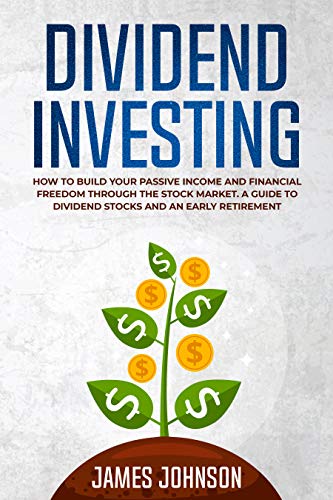
Value investors look for stocks with low stock prices based on many factors. A value investor looks for stocks that are undervalued based on a variety of factors, including book value (the difference between the company's assets or liabilities), earnings, among others. They often hold these stocks for a long time. They don’t expect stock value to suddenly go up, but they do expect it to grow slowly over a longer period.
Contrarian value investors
Contrarian value investors look for opportunities to invest against the flow and analyze current market conditions. He searches for opportunities in areas where other investors are jumping into particular asset classes or sectors. The stock market has seen a lot of volatility in recent years, and some sectors have seen better returns than others. Contrarians often look for companies with high profit margins that are undervalued.

The difference between a value investor and a contrarian is often fine-tuned through trial and error. One famous example is the story of Michael Burry, a California-based neurologist-turned-hedge fund owner, who figured out that the subprime mortgage market was mispriced and shorted the riskiest part of the market. His story, which became a bestseller, is now a classic in investing.
Investor in index funds
A value investor (or index fund investor) is someone who prefers index funds over actively managed ones. Index funds are composed of a pre-selected portfolio of stocks and bonds, which minimizes the impact of any single stock's decline. An index fund, however, is composed of individual stocks that take a larger hit than an Index Fund. Index funds also have a lower turnover rate, which will reduce your tax bill.
An investor who focuses on value does not care about price fluctuations as much as he does about the underlying assets of a company. The intrinsic worth of a company's underlying assets (such as its net tangible asset) is what anchors its overall value. This allows value investors to remain more stable in the face of falling prices. An index investor, on the other hand, uses an arbitrary anchor to assess value. If the investment value decreases, the investor will feel more pain and be more likely to give up on the investment.
Active value investor
Active value investors are those who make investments based on the stock's value. He should be able recognize companies with strong values, which are likely grow. An active value investor must also know how to distinguish growth stocks from value stocks. Growth stocks are often more expensive that value stocks, while values stocks are cheaper than growth stocks. The style differences between the two are however significant. This means that growth stocks can outperform value stocks.

An Active Value Investor looks for stocks that have a high return potential at a low price. These stocks are not necessarily low-quality, but have historically had low to mid-teen ROEs with growth rates in the single digits. These stocks are often cheaper than their more expensive counterparts, but they often offer a greater return potential.
FAQ
How long does it take for you to be financially independent?
It depends on many variables. Some people are financially independent in a matter of days. Some people take years to achieve that goal. No matter how long it takes, you can always say "I am financially free" at some point.
It's important to keep working towards this goal until you reach it.
Do I need to buy individual stocks or mutual fund shares?
The best way to diversify your portfolio is with mutual funds.
But they're not right for everyone.
For example, if you want to make quick profits, you shouldn't invest in them.
Instead, pick individual stocks.
Individual stocks give you greater control of your investments.
Online index funds are also available at a low cost. These allow you track different markets without incurring high fees.
Should I diversify or keep my portfolio the same?
Many people believe diversification can be the key to investing success.
Financial advisors often advise that you spread your risk over different asset types so that no one type of security is too vulnerable.
This approach is not always successful. Spreading your bets can help you lose more.
For example, imagine you have $10,000 invested in three different asset classes: one in stocks, another in commodities, and the last in bonds.
Suppose that the market falls sharply and the value of each asset drops by 50%.
You have $3,500 total remaining. However, if all your items were kept in one place you would only have $1750.
So, in reality, you could lose twice as much money as if you had just put all your eggs into one basket!
Keep things simple. Don't take on more risks than you can handle.
Statistics
- An important note to remember is that a bond may only net you a 3% return on your money over multiple years. (ruleoneinvesting.com)
- Over time, the index has returned about 10 percent annually. (bankrate.com)
- According to the Federal Reserve of St. Louis, only about half of millennials (those born from 1981-1996) are invested in the stock market. (schwab.com)
- If your stock drops 10% below its purchase price, you have the opportunity to sell that stock to someone else and still retain 90% of your risk capital. (investopedia.com)
External Links
How To
How to Invest into Bonds
Bond investing is a popular way to build wealth and save money. There are many things to take into consideration when buying bonds. These include your personal goals and tolerance for risk.
If you are looking to retire financially secure, bonds should be your first choice. You may also choose to invest in bonds because they offer higher rates of return than stocks. Bonds might be a better choice for those who want to earn interest at a steady rate than CDs and savings accounts.
If you have the cash available, you might consider buying bonds that have a longer maturity (the amount of time until the bond matures). They not only offer lower monthly payment but also give investors the opportunity to earn higher interest overall.
There are three types of bonds: Treasury bills and corporate bonds. Treasuries bonds are short-term instruments issued US government. They pay very low-interest rates and mature quickly, usually less than a year after the issue. Companies like Exxon Mobil Corporation and General Motors are more likely to issue corporate bonds. These securities generally yield higher returns than Treasury bills. Municipal bonds are issued by state, county, city, school district, water authority, etc. and generally yield slightly more than corporate bonds.
If you are looking for these bonds, make sure to look out for those with credit ratings. This will indicate how likely they would default. Higher-rated bonds are safer than low-rated ones. Diversifying your portfolio in different asset classes will help you avoid losing money due to market fluctuations. This will protect you from losing your investment.